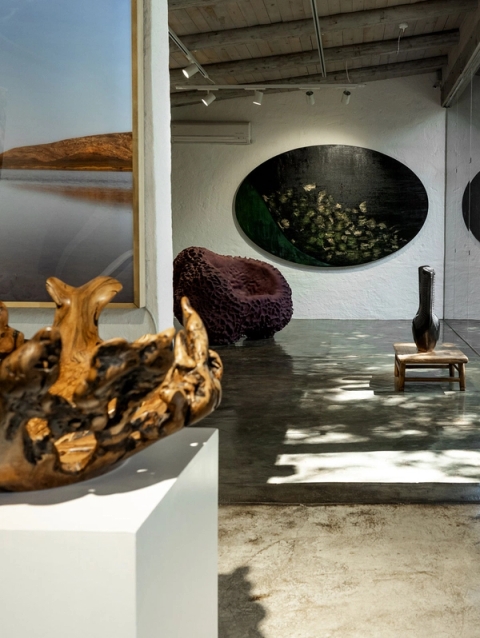My Enquiry (0)
No artwork has been selected.
Please choose an artwork to enquire.
Enquiry Submitted
Thank you for your enquiry and interest in our artists’ work. A member of the gallery team will respond shortly.
000%

Andile Dyalvane takes part in international showcase of “pandemic ceramics”
6 Jul 2020 (2 min) read
"I have learned more about my capacity to adapt in two months at home than I possibly would have in a year. It’s been a strange mix of adventure and precaution," says Andile.
Andile Dyalvane is one of 34 ceramic artists from 16 countries taking part in Quartz Inversion, an online showcase of “international pandemic ceramics” that documents how they experienced the Spring 2020 Coronavirus lockdown from different points around the world.
In their own words, images and videos, the invited participants share what they’ve been reflecting on during the “Great Pause”, how they’ve adapted to suddenly-shifted conditions (such as teaching ceramics online, home-schooling their children, and working away from their normal studios), and what they’ve been making, as they somehow managed to continue their studio practices in whatever places and with whatever materials were ready-to-hand.
“I have learned more about my capacity to adapt in two months at home than I possibly would have in a year. It’s been a strange mix of adventure and precaution,” writes Dyalvane on the Quartz Inversion website.
When South Africa went into lockdown, Dyalvane set up a makeshift studio on the balcony of his apartment. There he made large-scale new pieces that will form the basis of a new collection. He also experimented with a series of smaller pinched pieces in terracotta, explored sound meditations and stayed connected to his community of ceramicists with a series of Quarantine Workshops.
“Everyone is experiencing a sort of equalizer, yet the idea of equality is so vast and disparities even more evident during this ‘Great Pause.’ I have much gratitude for my lineage and upbringing; ‘good timing’ is often a request I put to my ancestors,” he says. The lockdown saw him exploring carving, printmaking and materiality — “expanding an ancient language born from my dreams and sketches, into carvings and clay movements,” he notes.
Quartz Inversion is co-curated by artists Adil Writer (Auroville, India) and Janet Abrams (Santa Fe, USA). The project follows an epidemiological model of transmission and will continue to expand according to a “Rate of Affection” where Ra= 1. Each QI Round One invited artist has nominated another ceramic artist to participate in QI Round Two, which will be published on the site in August 2020.

